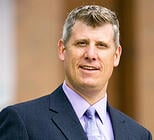Most of us began our careers either making widgets of some kind or selling widgets or delivering the services needed to make widgets work. If our work with widgets was good enough, many of us got promoted into positions of management. This created all kinds of issues in even the best organizations because widget making, widget selling and widget service delivery requires an entirely different skill set than management.
Whatever widget industry your career started with – manufacturing car parts, IT services, sales and retail, etc. – success is typically all about competencies like timely follow-through, execution, approachability, and customer focus. However, once in management the competency paradigm shifts.
The Role of the Manager
According to Harvard Business School professor John Kotter management is all about…
- Planning;
- Budgeting;
- Organizing;
- Staffing;
- Controlling and problem solving (Kotter, 1996, p. 26).
Kotter further states that...
Management is a set of processes that can keep a complicated system of people and technology running smoothly (Kotter, 1996, p. 25).
All of these competencies, as well as other management competencies like delegating, measuring work, process development, re-engineering, etc., are intended to “produce a degree of predictability and order.” You’ll notice that all of these competencies are different from those associated with assembling, handling and dispensing widgets. So as our roles change, there is no guarantee that success with making widgets wonderful will result in wonderful management.
The Role of the Leader
The same is true when we find ourselves promoted into positions that require us to be more leadership centric than management centric. According to Kotter’s research, leadership requires an entirely different skillset than management. Leadership competencies are things like…
- Aligning and uniting people;
- Motivating and Inspiring;
- Establishing vision and direction.
The leadership role is intended to create change (Kotter, 1996, p. 26).
At first glance, leadership’s focus on producing change would seem diametrically opposed to management’s focus on producing predictability and order. However, both roles are completely necessary depending on the situation.
One of the skills that define a true leader is their ability to unify diverse talents, perspectives, values, experiences, etc., all under one common purpose. It is challenging work, but those kinds of purposes do exist and a leader knows how to reveal them. A person who sows division is not a leader. Neither is a person who thinks unity requires uniformity. People are incredibly unique and authentic. A true leader doesn't try to change that or strip individuals of their distinctiveness. To the contrary, they find a way to synergize it all. A person who uses power to divide or to force uniformity on others is a tyrant.
Leaders help us navigate paradigm shifts by anticipating and helping us navigate necessary changes. They also help us create a compelling vision of the future and they focus our energy on meeting the needs of significance. And because change can be so disruptive and such difficult work, you then need the complimentary management skillset to help refine and integrate those changes in such a way that people can experience the energizing efficiencies that result. They are complimentary roles and they are equally necessary roles. However, if you think of both skill sets as commodities, leadership is in shorter supply than is management.
Over-managed and Under-led
John Kotter relates that "Most U.S. corporations today are over-managed and under-led” (Kotter, 2001, p. 1). This may be due to all the emphasis that traditional MBA programs have placed on the development of the management role and building intellectual horsepower – much to the exclusion of leadership competencies. As a result, it comes as no surprise that renowned leadership author and consultant Warren Bennis observed that “Failing organizations are usually over-managed and under-led” (Kemp, 2000, p. 207).
Success with the management role does not necessarily translate into success with the leadership role. Once again, the competency paradigm completely shifts when moving from one role to the other. The strategy process requires the presence of both roles at different times. However, management and leadership simply require separate competencies which are demanded by dynamic and changing situations.
When we choose to ignore these competency paradigm shifts, we find out by default that many great widget makers make poor managers….and many great managers make poor leaders. This is especially true if there is no opportunity for new competency development in the succession process. Strategic leadership is what takes place when a person possesses the competencies that allow them to know when and how to execute, manage and lead.
Since strategic leadership optimally requires three separate skillsets in the same person, it is a rare commodity. However, it can be developed in people, and when this takes place, it allows strategic leaders to contribute to widget making, widget management and widget leadership. Ultimately that collective understanding and gifting can make for a pretty wonderful widget.
 Joel Hoomans is Assistant Professor of Management and Leadership Studies at Roberts Wesleyan College as well as Director of Graduate Studies in the Division of Business. He holds a Doctorate in Strategic Leadership from Regent University. Prior to his involvement at Roberts Wesleyan College, Joel worked for Wegmans—the premier grocery retailer in the United States—as a human resources professional, eventually becoming their first Manager of Leadership Development. Learn more about Joel.
Joel Hoomans is Assistant Professor of Management and Leadership Studies at Roberts Wesleyan College as well as Director of Graduate Studies in the Division of Business. He holds a Doctorate in Strategic Leadership from Regent University. Prior to his involvement at Roberts Wesleyan College, Joel worked for Wegmans—the premier grocery retailer in the United States—as a human resources professional, eventually becoming their first Manager of Leadership Development. Learn more about Joel.
Additional Reading
- Time Lords & Lackeys: 3 Timely Habits of Great Leaders by Dr. Joel Hoomans
- Focus, Finish, Celebrate: Keys to Strategic Leadership by Mike Bargmann
- The Branded Leader: Essential Marketing Habits of Distinguished Leaders by William H. Todd
References
- Kemp, C. (2000) Wisdom honor & hope: The inner path to true greatness. Franklin, TN: Wisdom Company.
- Kotter, J. (1996). Leading change. Boston: Harvard Business School Press.
- Kotter, J. (2001, December). What leaders really do (classic). Retrieved from http://www.macf.com/images/stories/pdf/ASHA/hbr%20what%20leaders%20really%20do.pdf













